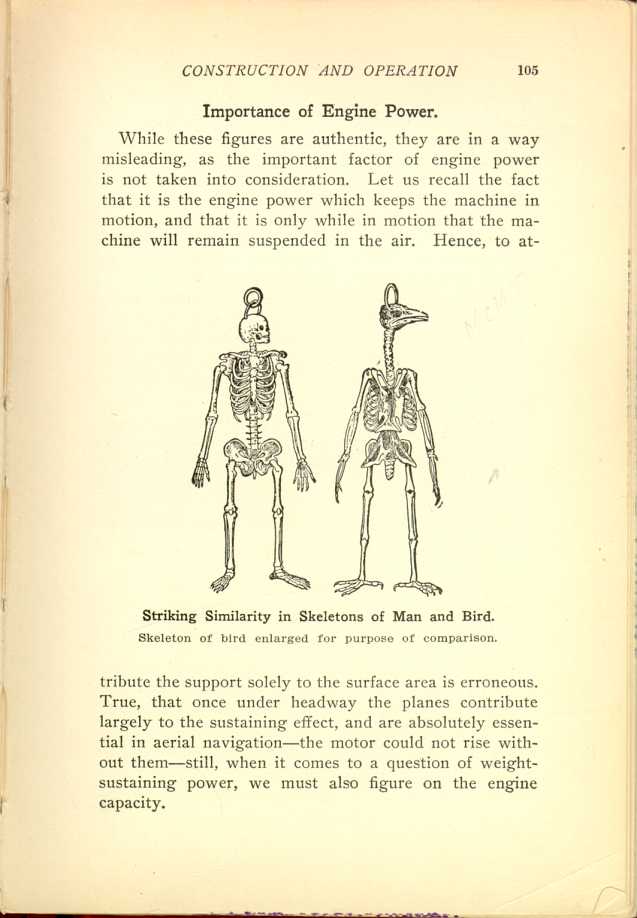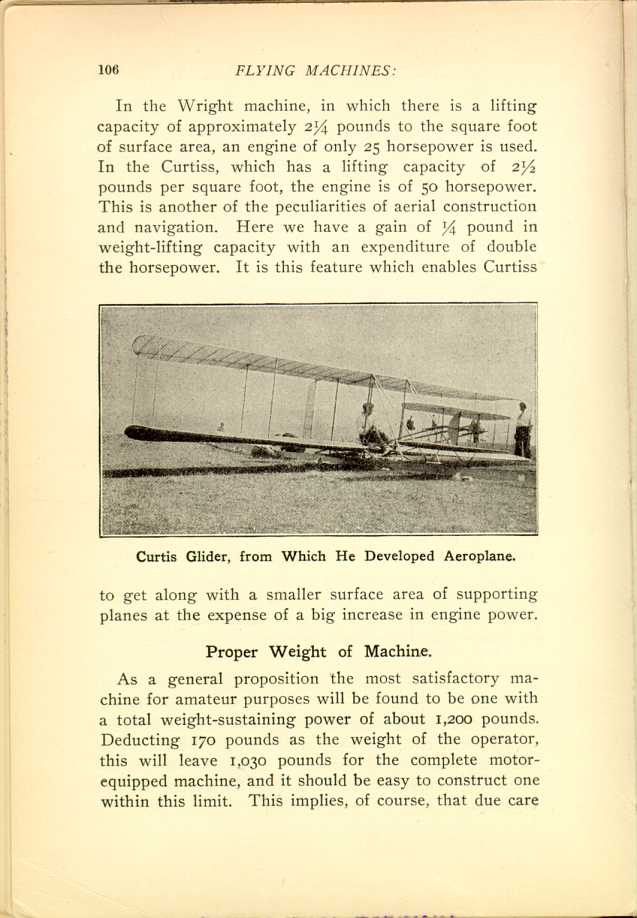Importance of Engine Power.
While these figures are authentic, they are in a way
misleading, as the important factor of engine power
is not taken into consideration. Let us recall the fact
that it is the engine power which keeps the machine in
motion, and that it is only while in motion that the machine
will remain suspended in the air. Hence, to attribute

Striking Similarity in Skeletons of Man and Bird.
[Description: Black and white illustration: Left: skeleton of human. Right:
enlarged skeleton of bird.]
Skeleton of bird enlarged for purpose of comparison.
In the Wright machine, in which there is a lifting
capacity of approximately 2 1/4 pounds to the square
foot
of surface area, an engine of only 25 horsepower is used.
In the Curtiss, which has a lifting capacity of 2 1/2
pounds per square foot, the engine is of 50 horsepower.
This is another of the peculiarities of aerial construction
and navigation. Here we have a gain of 1/4 pound in
weight-lifting capacity with an expenditure of double
the horsepower. It is this feature which enables Curtiss

Curtiss Glider, from Which He Developed Aeroplane.
[Description: Black and white photograph: Man in glider.]